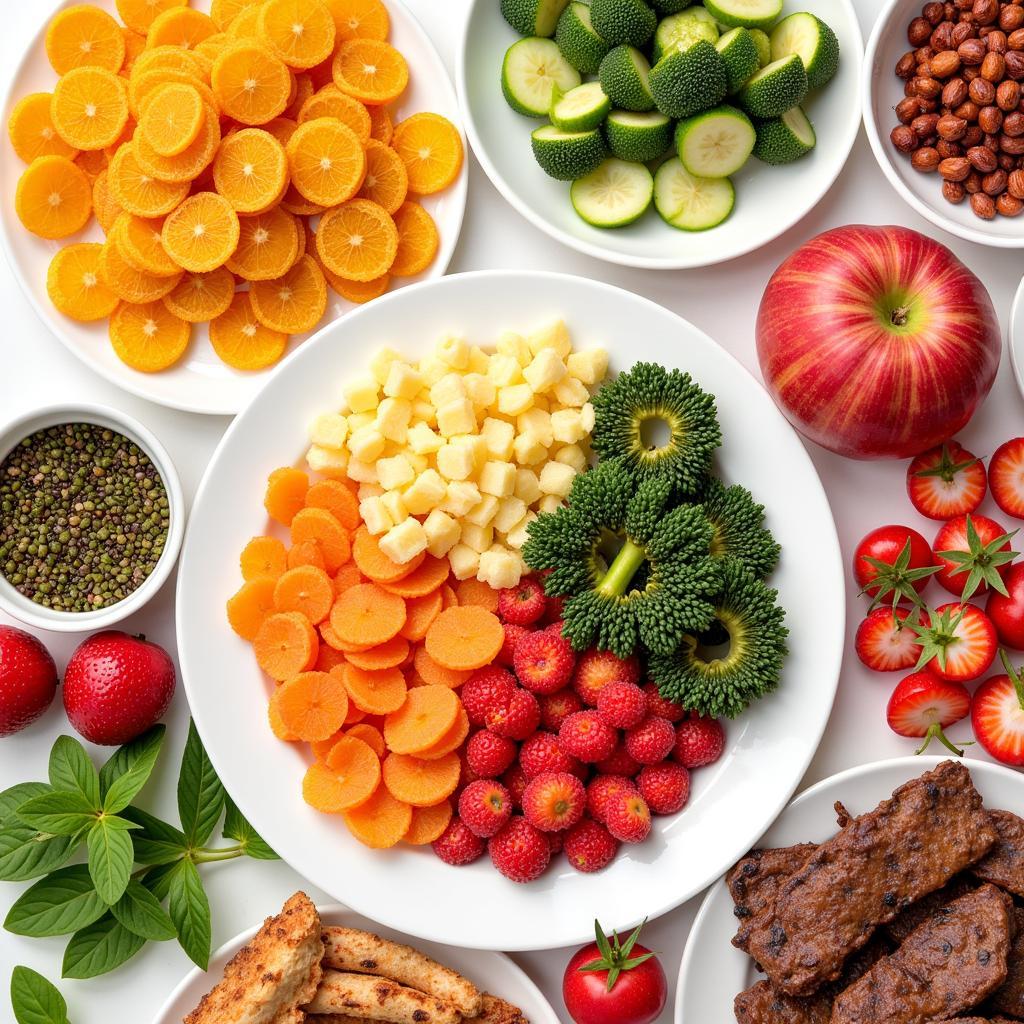Freeze dried food has become increasingly popular in recent years, transforming the way we think about food preservation and convenience. From backpackers seeking lightweight meal options to busy families looking for quick and healthy dinners, freeze-dried food offers a unique solution. But what exactly is it, and why is it gaining so much traction? This comprehensive guide will delve into the fascinating world of freeze-dried food, exploring its benefits, uses, and everything you need to know.
What is Freeze Dried Food and How Does it Work?
Freeze drying, also known as lyophilization, is a specialized dehydration process that removes nearly all the moisture from food while preserving its nutritional value, flavor, and shape. Unlike traditional drying methods, freeze drying doesn’t rely on heat. Instead, it involves three key stages: freezing, primary drying (sublimation), and secondary drying (desorption). First, the food is frozen solid. Then, it’s placed in a vacuum chamber where the ice transforms directly into vapor, bypassing the liquid phase. This process, called sublimation, removes the majority of the water. Finally, a secondary drying process removes any remaining unfrozen water molecules, resulting in a shelf-stable product with an incredibly long shelf life.
 Freeze Drying Process Stages
Freeze Drying Process Stages
The Benefits of Choosing Freeze Dried Food
Freeze-dried food offers a plethora of advantages over other preservation methods. Its extended shelf life, often spanning decades, makes it a perfect choice for emergency preparedness. Furthermore, the lightweight nature of freeze-dried meals is a boon for hikers and campers. Perhaps most importantly, freeze drying retains a significant portion of the food’s original nutritional content, unlike canning or dehydrating, which can lead to nutrient loss.
Nutritional Value and Flavor Retention
While some minor nutrient loss is inevitable during any preservation process, freeze drying minimizes this impact. Vitamins, minerals, and antioxidants are largely preserved, ensuring that you’re getting a nutritious meal. Moreover, the low processing temperature helps maintain the food’s original flavor and aroma, making rehydrated meals taste remarkably fresh.
“Freeze drying is a game-changer for preserving delicate fruits and vegetables,” says renowned food scientist Dr. Amelia Carter. “It locks in the freshness and nutrients, allowing you to enjoy seasonal produce year-round.”
How to Use Freeze Dried Food
Preparing freeze-dried food is incredibly simple. Just add hot water, let it rehydrate for a few minutes, and enjoy! The process is quick and mess-free, making it ideal for camping trips, busy weeknights, or even a quick lunch at the office.
Versatility and Convenience
Freeze-dried ingredients can also be incorporated into everyday cooking. Crumble freeze-dried fruits into yogurt or oatmeal for a boost of flavor and nutrition. Add freeze-dried vegetables to soups and stews for added depth and complexity. The possibilities are endless!
“I love using freeze-dried herbs and spices in my cooking,” shares celebrity chef Michael Rossi. “They pack a powerful punch of flavor and are incredibly convenient to have on hand.”
Is Freeze Dried Food Worth the Investment?
While freeze-dried food might be slightly more expensive upfront than other preserved options, the benefits it offers make it a worthwhile investment. The extended shelf life minimizes food waste, the lightweight nature reduces shipping costs, and the nutritional value ensures you’re getting your money’s worth.
 Variety of Freeze-Dried Foods
Variety of Freeze-Dried Foods
Conclusion
Freeze dried food is a revolutionary approach to food preservation that offers unparalleled convenience, nutritional value, and longevity. From emergency preparedness to everyday meals, freeze drying is transforming the way we eat. So, whether you’re an avid adventurer, a busy professional, or simply seeking healthy and convenient food options, exploring the world of freeze-dried food is definitely worth considering.
FAQ
- How long does freeze-dried food last? Freeze-dried food can last for up to 25 years or even longer, depending on the product and storage conditions.
- Is freeze-dried food healthy? Yes, freeze-drying retains a significant portion of the food’s original nutritional value, making it a healthy and convenient option.
- How do you rehydrate freeze-dried food? Simply add hot water to the food, let it sit for a few minutes, and enjoy!
- Is freeze-dried food expensive? While it might be slightly more expensive upfront, the extended shelf life and nutritional value make it a worthwhile investment.
- Where can I buy freeze-dried food? You can find freeze-dried food at outdoor retailers, online stores, and some grocery stores.
- Can you freeze dry food at home? While it’s possible, it requires specialized equipment and is often more cost-effective to purchase commercially freeze-dried products.
- What are the best freeze-dried foods for camping? Lightweight meals, fruits, and vegetables are popular choices for camping trips.
Common Freeze Dried Food Scenarios
- Emergency Preparedness: Having a supply of freeze-dried food on hand ensures you have access to nutritious meals during unexpected events.
- Camping and Hiking: Lightweight and easy to prepare, freeze-dried meals are a staple for outdoor enthusiasts.
- Busy Weeknights: Quickly rehydrate a freeze-dried meal for a healthy and convenient dinner.
- Travel: Pack freeze-dried snacks and meals for convenient and healthy eating on the go.
Further Exploration
- Learn more about the science behind freeze drying on our blog.
- Discover our range of delicious freeze-dried meals and snacks.
Need Assistance? Contact us! Phone: 02437655121, Email: minacones@gmail.com. Visit our store at: 3PGH+8R9, ĐT70A, thôn Trung, Bắc Từ Liêm, Hà Nội, Việt Nam. We have a 24/7 customer support team ready to help.